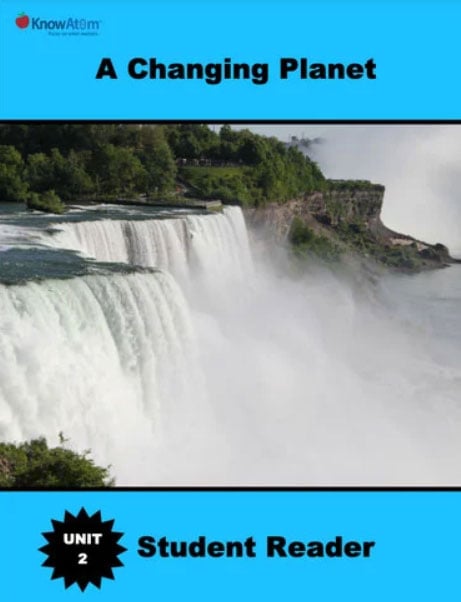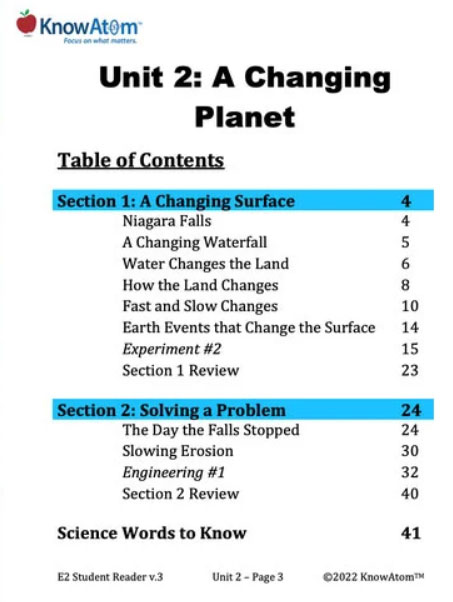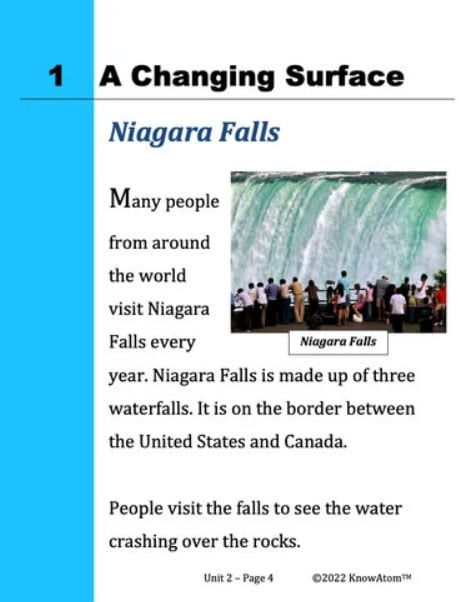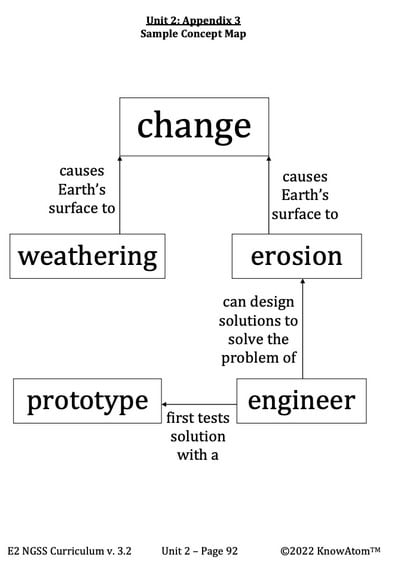In this lesson, students apply what they know about weathering and erosion to engineer a solution that prevents rainwater from washing away a sandy hillside.
In this unit, students explore the science phenomena of different processes that change Earth’s surface over time. Once students have investigated how wind and water change the shape of the land, they use their scientific knowledge to engineer a solution that prevents rainwater from washing away a sandy hillside. This page showcases key components of this lesson.
Science background gives teachers detailed information about the science phenomena being explored in this unit. In this case, the phenomena are Earth events such as erosion and weathering.
In 1969, the U.S. Army Corps of Engineers came up with a dramatic solution to address the rapid rate of erosion of the American side of Niagara Falls: they created a dam to block the Niagara River from reaching the American side of the falls so that no water flowed down. Over several months, engineers studied the riverbed and added mechanical supports to strengthen the land so it was less susceptible to weathering and erosion. Initially engineers had wanted to remove the majority of the loose rocks that sit at the base of the waterfall, but they ended up foregoing that plan because the cost was too high.
Engineers continue to control erosion, determining how fast the water flows over the falls. With these efforts, the rate of erosion has decreased significantly at Niagara Falls. Erosion isn’t just a problem for massive waterfalls like Niagara. Erosion can be a problem for anyone who depends on land that is susceptible to erosion. For example, steep hills can experience a lot of erosion as water, wind, and gravity dislodge and move the Earth materials down the hill.
There are many ways that engineers can slow down erosion. One way is to build small walls or fences on a hill. Engineers can build one wall or more than one wall on a hill. These walls keep soil and rocks from sliding down. Another way is to cover the hill with a material. This cover can keep the land underneath in place, protecting it from the erosive forces of water and wind. One way to cover the hill is with a material like burlap, which can help to keep soil and other materials in place on a hill. Engineers can also grow plants because the underground roots help to anchor the soil or sand in place, reducing the amount of erosion that occurs.
In this lesson, students apply what they know about weathering and erosion to engineer a solution that prevents rainwater from washing away a sandy hillside.

Prepared hands-on materials, full year grade-specific curriculum, and personalized live professional development designed to support mastery of current state science standards.
Change: to make something different from what it is know
Engineer: anyone who uses scientific knowledge and mathematics to solve a problem by creating new technologies
Erosion: the movement of small pieces of rock, soil, and sand from one place to another by wind or water
Prototype: a smaller version of what will be engineered
Weathering: the breakdown of Earth materials (such as rocks, sand, and soil) into smaller pieces; can be caused by wind, water, or living things
The Day the Falls Stopped
Years ago, a group of engineers did something no one else had ever done. They stopped the water from going over one of the waterfalls in Niagara Falls.
Engineers are people who use scientific knowledge and mathematics to solve a problem by creating new technologies. A technology is anything that people have made to meet their needs and wants.
All engineers start with a problem. This makes engineers different from scientists. Scientists always begin with a question.
Engineers in Niagara Falls had a problem. The water was eroding the land too quickly. Erosion isn’t always bad. But it can sometimes cause problems for people. This can happen when people use the land that is being eroded.
When engineers define a problem, they include the criteria. The criteria are the needs the solution must meet. In Niagara Falls, there were two criteria. One was that the erosion of the land had to slow down. The other was that the water had to keep moving over the land.
Engineers also include the constraints. Constraints are ways the solution is limited. Cost is a common constraint. Engineers have to think about how much their solution costs. Materials are another constraint. Engineers can only use the materials they have.



For the hands-on activity of this lesson, students act as engineers by designing a solution to a problem. First, students summarize the problem presented in the engineering scenario, which is that a sandy hillside at a school gets washed away in heavy and light rains. Students then identify the correct solution criteria and constraints. Students draw a scientific diagram of their chosen prototype solution and use their diagram as a guide for creating their erosion-slowing prototype. Once students build their erosion-slowing prototype solution, they test their prototype to determine how well it solved the problem, meeting the criteria within the constraints. They collect and analyze observational data on the amount of sand that was washed away from the hillside for each of their prototype solutions, looking for evidence in their observations about which prototype best solved the problem. Students use the data they gather from their first prototype solution to improve their second prototype so that it better solves the problem. Finally, students evaluate both prototypes to explain how well their prototype solved the problem and present their analysis to the class.
KnowAtom incorporates formative and summative assessments designed to make students thinking visible for deeper student-centered learning.

Standards citation: NGSS Lead States. 2013. Next Generation Science Standards: For States, By States. Washington, DC: The National Academies Press. Neither WestEd nor the lead states and partners that developed the Next Generation Science Standards were involved in the production of this product, and do not endorse it.